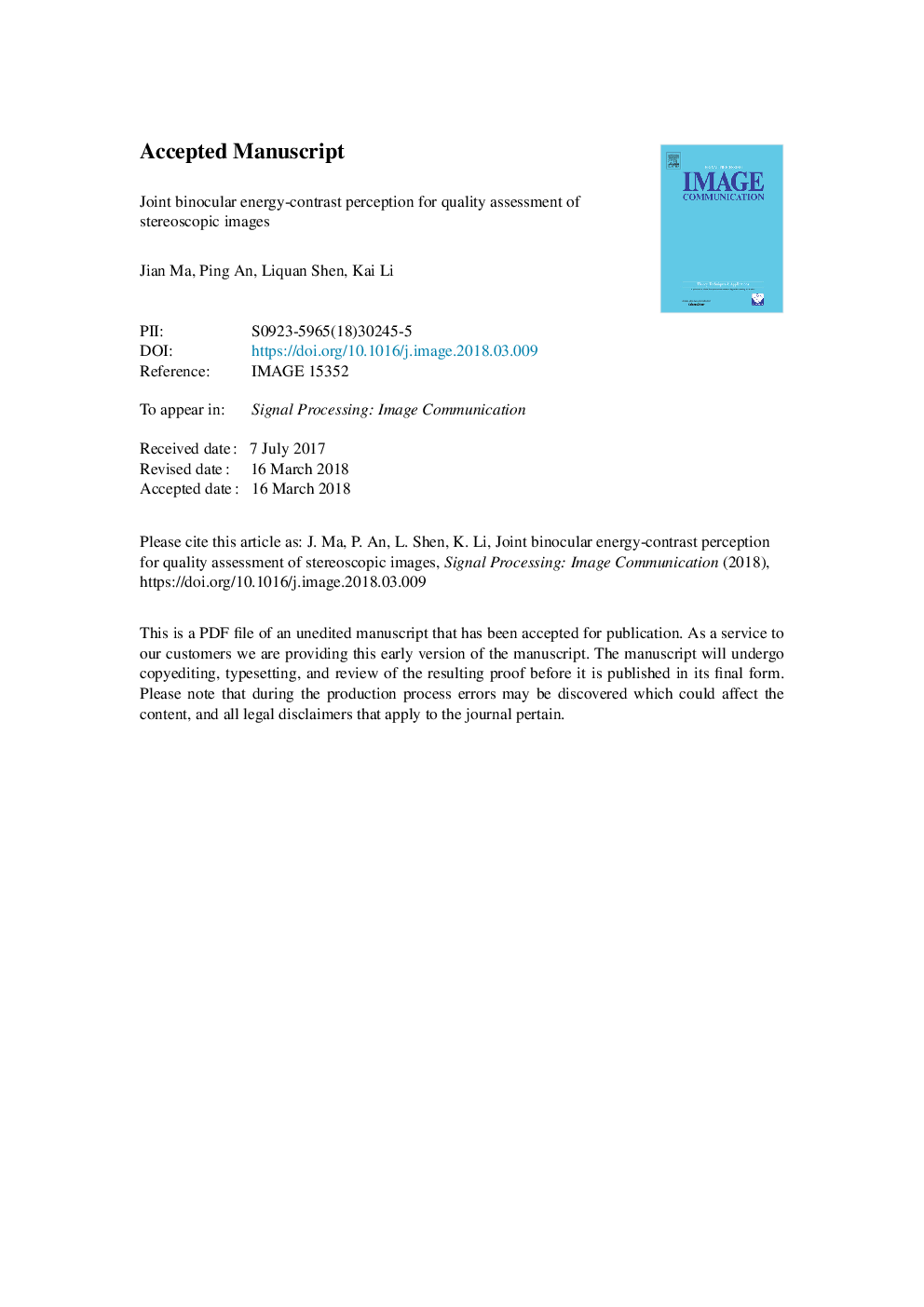| Article ID | Journal | Published Year | Pages | File Type |
|---|---|---|---|---|
| 6941493 | Signal Processing: Image Communication | 2018 | 27 Pages |
Abstract
. Binocular visual system (BVS) can perceive the difference between left and right retinal images to create a mental image with depth perception, which is in consequence of two binocular interactions, i.e., binocular fusion and rivalry. To study the effective method of accounting for binocular fusion and rivalry in stereoscopic image quality assessment (SIQA) design, in this paper, a novel full reference (FR) SIQA metric is proposed by jointly considering binocular energy-contrast perception (BECP). As a major technical contribution, we design a dual-channel model for SIQA that more effectively mimic binocular fusion and rivalry mechanisms of the BVS. Specifically, since the binocular visual sensitivity of stimulus at different spatial frequencies is different, each image of the reference and distorted stereopairs is first filtered independently by a contrast sensitivity function (CSF). Constructively, the weights of relative contribution of each view for binocular fusion are calculated based on a magnitude response of Log-Gabor filtering measure. Further, the weights of relative contribution of each view for dominant perception are calculated by utilizing a block-based contrast measure. Finally, the overall perceived quality of a stereoscopic image is obtained by the quality scores combining of the BECP. Experiments are performed on publicly available symmetric and asymmetric subjected stereoscopic image databases, which demonstrate that the proposed metric achieves high consistency with human opinions and significantly higher prediction accuracy than the state-of-the-art FR-SIQA methods.
Keywords
Related Topics
Physical Sciences and Engineering
Computer Science
Computer Vision and Pattern Recognition
Authors
Jian Ma, Ping An, Liquan Shen, Kai Li,
